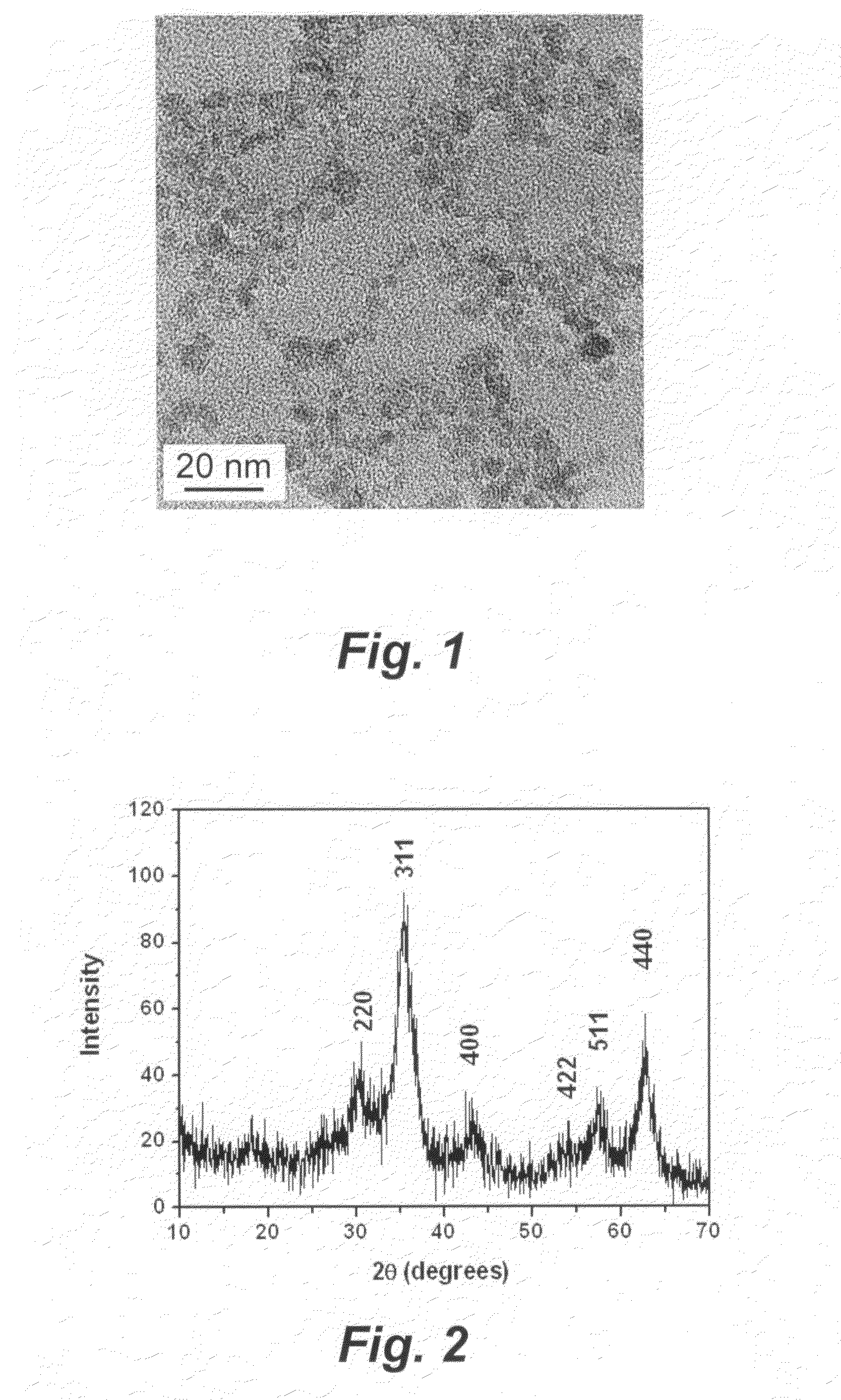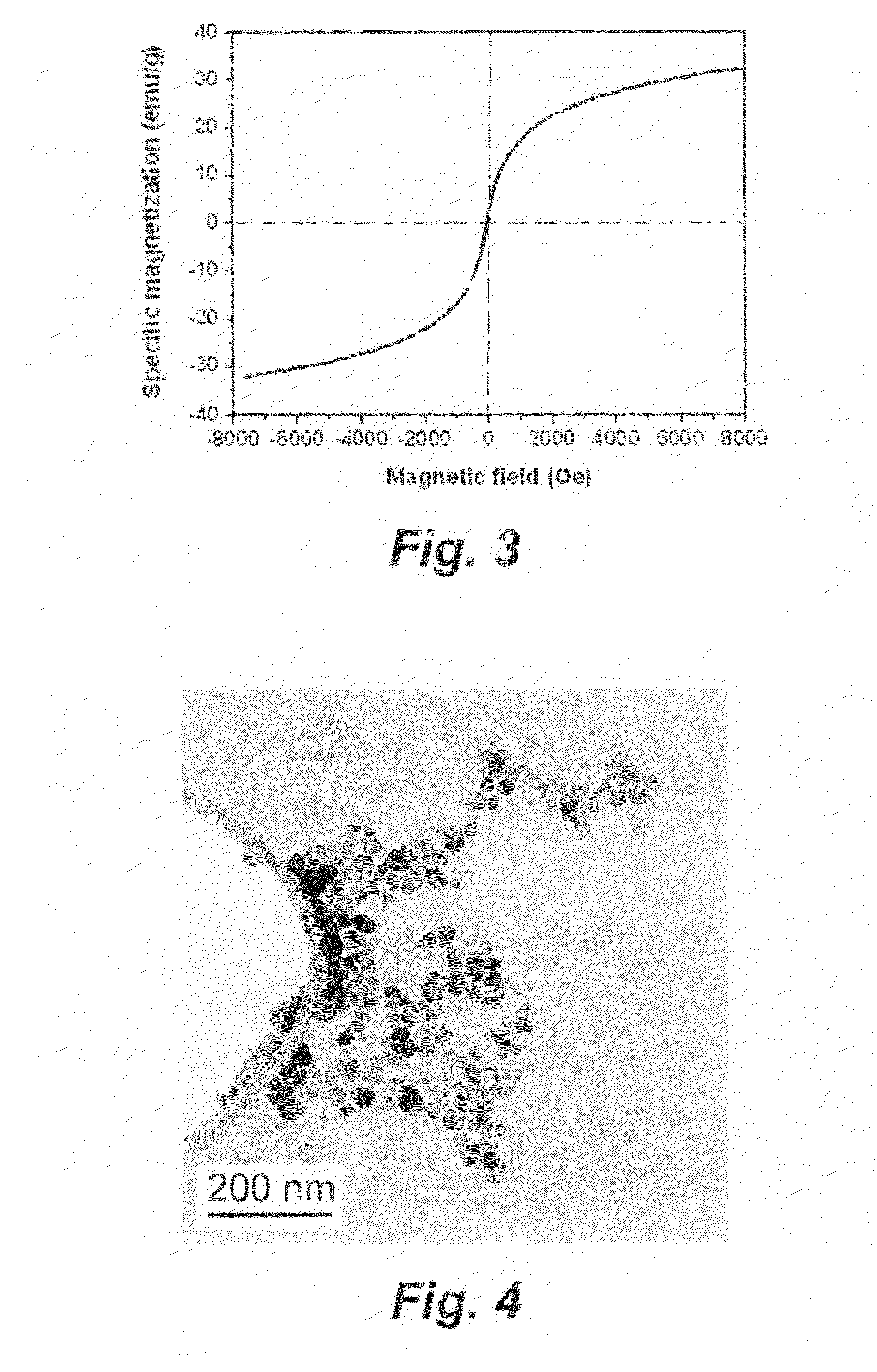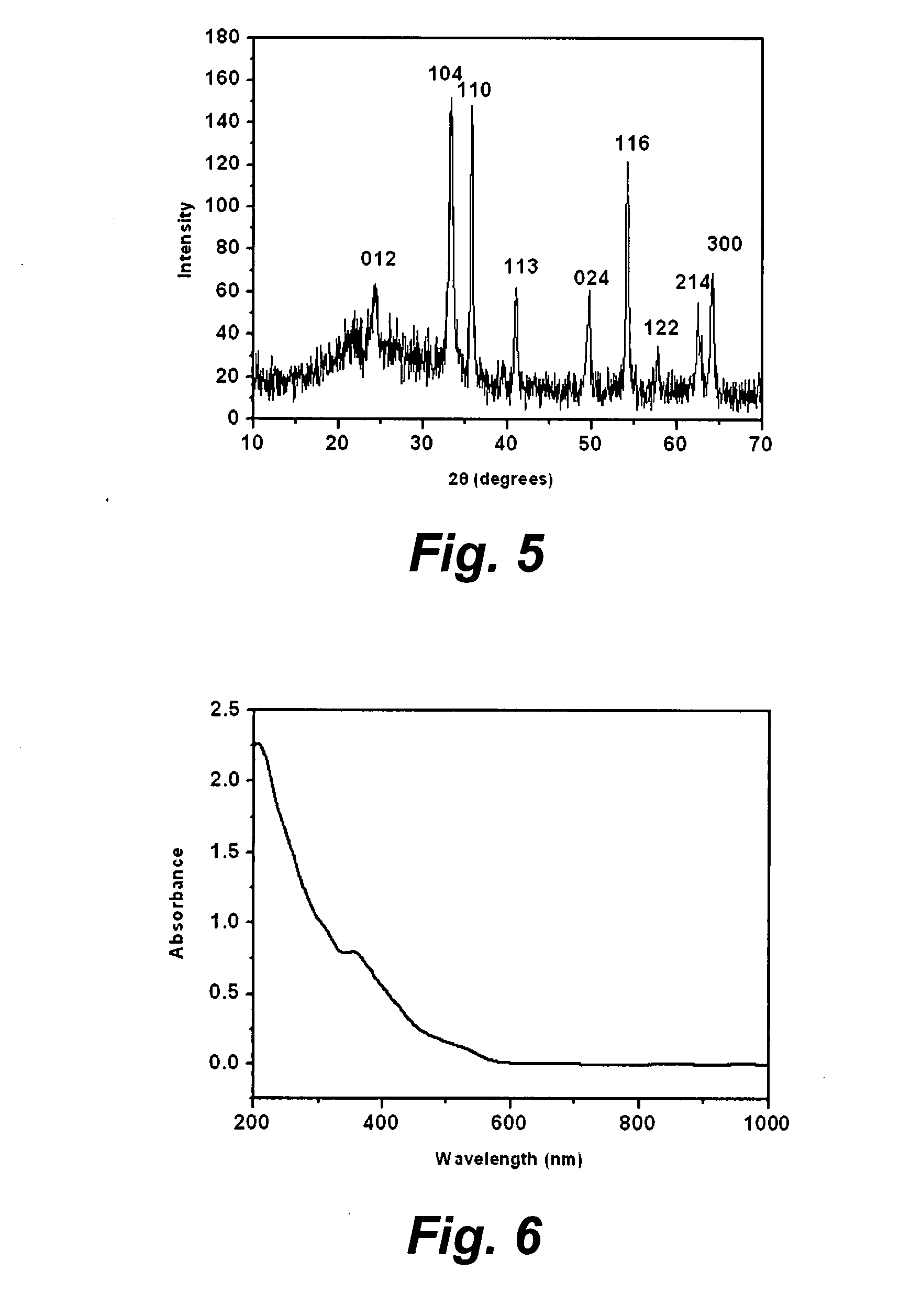Solid-state synthesis of iron oxide nanoparticles
a technology of iron oxide nanoparticles and solid-state synthesis, which is applied in the direction of physical/chemical process catalysts, metal/metal-oxide/metal-hydroxide catalysts, water treatment compounds, etc., can solve the problem of constant problem of good aqueous dispersibility without particle aggregation, and the method is known to have at least. , the typical grinding or milling operation can be a time-consuming process
- Summary
- Abstract
- Description
- Claims
- Application Information
AI Technical Summary
Benefits of technology
Problems solved by technology
Method used
Image
Examples
example 1
[0072]Mixed solid powders of FeCl3.6H2O (0.005 mol, 1.35 g), FeCl2.4H2O (0.0025 mol, 0.50 g) and KCl (3.7 g) were ground in a mortar for 30 min at room temperature. After grinding, the mixture appeared as a yellow paste. KOH powder (0.02 mol, 1.22 g) was then added to the mortar and ground for another 30 min at room temperature. In the first tens of seconds, a lot of vapor and heat were notably released. After grinding, the mixture became a black solid. This black solid was then repeatedly washed with DDI water by stirring, sonication, and filtering, until no Cl− ion could be detected. In this way, an aqueous colloid of γ-Fe2O3 nanoparticles was synthesized. The prepared sample may be seen in FIG. 1.
example 2
[0073]The colloid sample in example 1 was collected by use of a 0.1 μm membrane as solid and then vacuum dried at 50° C. for 6 hours. A brown powder of γ-Fe2O3 nanoparticles was obtained, which weighed 0.49 g with a yield of 81%. The prepared sample may be seen in FIGS. 2 and 3.
example 3
[0074]Mixed solid powders of FeCl3.6H2O (0.01 mol, 2.7 g), and KCl (5.4 g) were ground in a mortar for 30 min at room temperature. KOH powder (0.03 mol, 1.68 g) was then added to the mortar and ground for another 30 min at room temperature. The mixture was then repeatedly rinsed with DDI water until no Cl− ion could be detected. In this way, the aqueous colloid of iron oxide nanoparticles was synthesized. After washing, the colloid was further vacuum dried at 50° C. for 6 hours. A brown power of Fe2O3 nanoparticles, as a mixture of hematite and maghemite, was thus obtained. The prepared sample may be seen in FIG. 7, and is represented by curve III in FIG. 10.
PUM
| Property | Measurement | Unit |
|---|---|---|
| Temperature | aaaaa | aaaaa |
| Temperature | aaaaa | aaaaa |
| Temperature | aaaaa | aaaaa |
Abstract
Description
Claims
Application Information
 Login to View More
Login to View More - R&D
- Intellectual Property
- Life Sciences
- Materials
- Tech Scout
- Unparalleled Data Quality
- Higher Quality Content
- 60% Fewer Hallucinations
Browse by: Latest US Patents, China's latest patents, Technical Efficacy Thesaurus, Application Domain, Technology Topic, Popular Technical Reports.
© 2025 PatSnap. All rights reserved.Legal|Privacy policy|Modern Slavery Act Transparency Statement|Sitemap|About US| Contact US: help@patsnap.com



